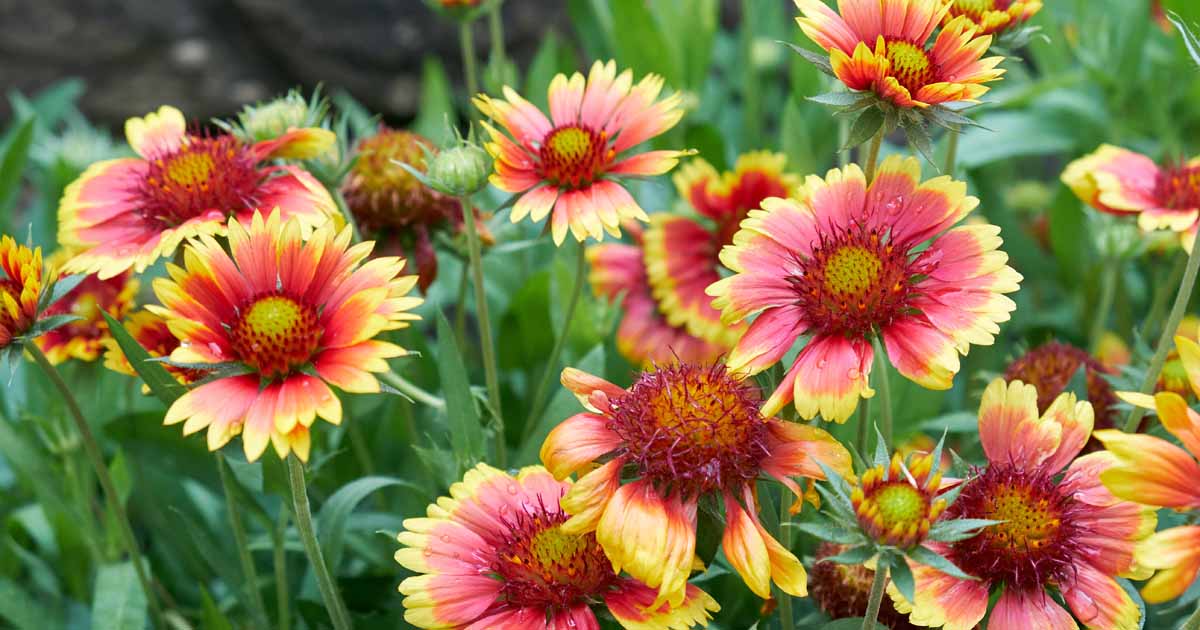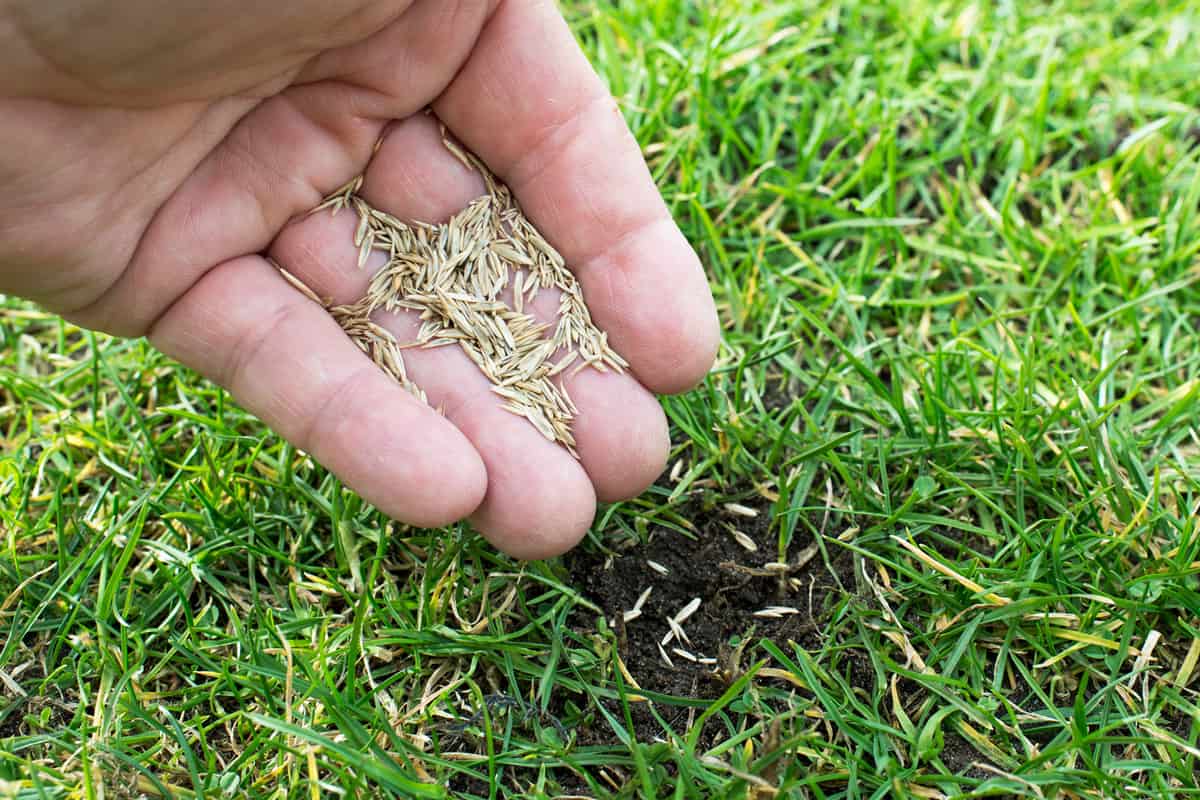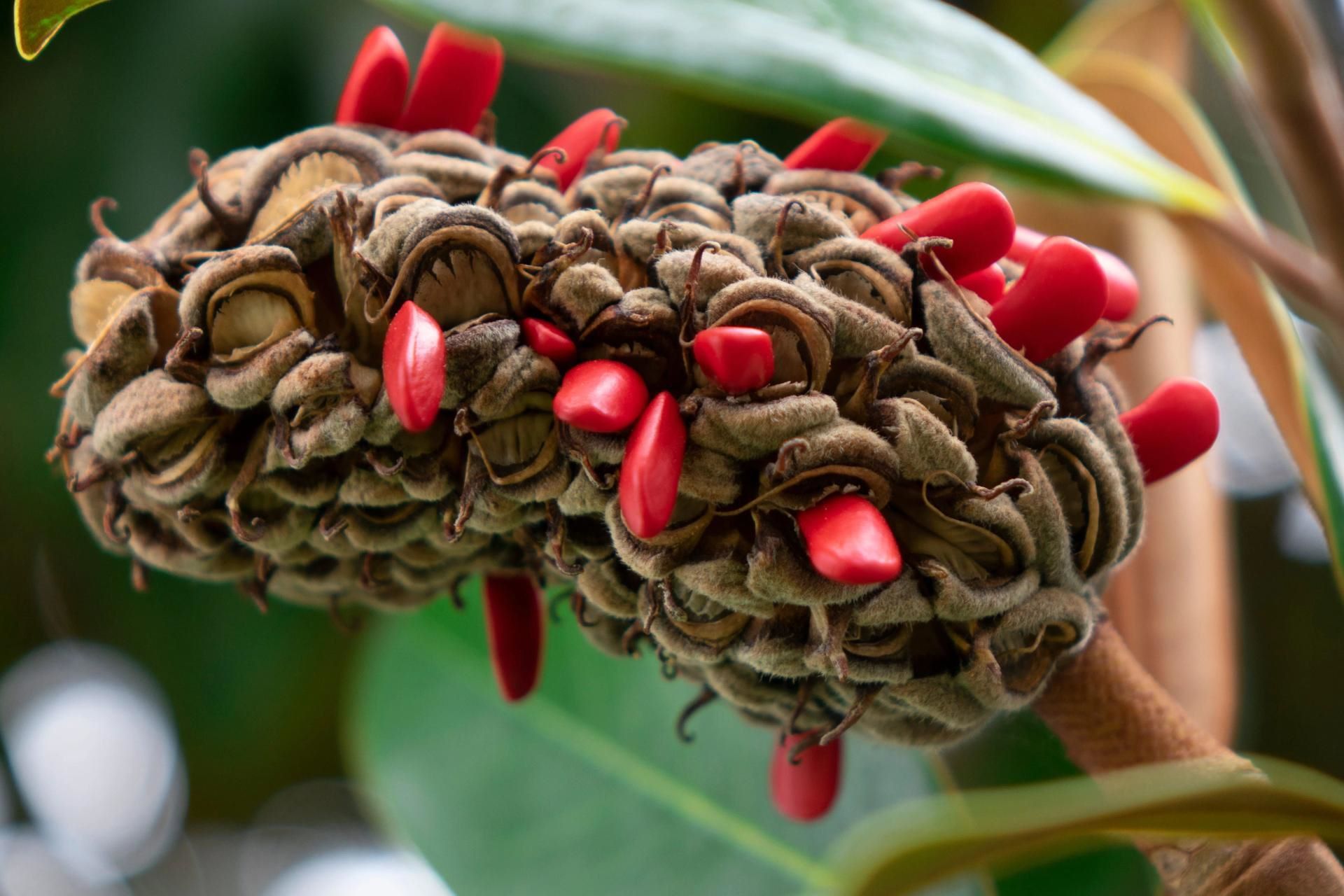Home>Garden Essentials>When To Plant Alfalfa Seed


Garden Essentials
When To Plant Alfalfa Seed
Modified: March 24, 2024
Unsure when to plant alfalfa seed in your garden? Find all the answers and expert tips to optimize your garden's growth at the right time.
(Many of the links in this article redirect to a specific reviewed product. Your purchase of these products through affiliate links helps to generate commission for Storables.com, at no extra cost. Learn more)
Introduction
When it comes to creating a beautiful and vibrant garden, one of the key elements to consider is the plants you choose to cultivate. Among the many options available, alfalfa seed stands as a versatile and beneficial choice. Alfalfa is a perennial flowering plant often used as forage for livestock due to its high nutritional value. However, it can also be a wonderful addition to your garden, providing beauty, beneficial insects, and even improving the soil’s health.
Planting alfalfa seed requires careful consideration of various factors to ensure successful growth and development. In this article, we will explore when to plant alfalfa seed, the optimal soil conditions for its growth, as well as the steps to effectively plant and care for alfalfa seedlings.
Whether you are a seasoned gardener or just starting your green thumb journey, understanding the ideal conditions for planting alfalfa seed will help you create a thriving garden that will be the envy of your neighbors.
Key Takeaways:
- Plant alfalfa seed in spring or fall, considering climate and soil quality. Prepare the soil, sow the seeds, and provide proper care for healthy and productive alfalfa plants.
- Ensure successful alfalfa growth by planting in optimal conditions, providing proper care, and monitoring for pests and diseases. Enjoy the process and reap the rewards of a thriving garden.
Read more: How To Plant Alfalfa Seeds
Factors to Consider Before Planting Alfalfa Seed
Before diving into when to plant alfalfa seed, it is crucial to evaluate certain factors that might influence the success of your garden. These factors include climate, soil quality, and available space. Let’s take a closer look at each of these considerations:
- Climate: Alfalfa performs best in temperate climates with summers that are not excessively hot and winters that are not extremely cold. It prefers areas with cool and moist springs but can withstand drought conditions once established. Understanding your local climate conditions will help determine the optimal time for planting alfalfa seed.
- Soil Quality: Alfalfa thrives in well-drained soil with a pH level between 6 and 7.5. Conducting a soil test prior to planting will allow you to assess its nutrient content and make any necessary amendments to improve the soil quality.
- Available Space: Alfalfa is a perennial plant that requires ample space to spread its roots. Ensure you have a designated area in your garden that can accommodate the growth of alfalfa plants without overcrowding other plantings.
Soil Preparation and Conditions for Alfalfa Seed Planting
Preparing the soil correctly and creating favorable conditions are essential steps in ensuring the successful establishment of alfalfa seedlings. Here are some key tips:
- Clear the Area: Start by removing any weeds or vegetation from the planting site. This will prevent competition for nutrients and sunlight.
- Loosen the Soil: Use a garden fork or tiller to loosen the soil to a depth of about 8-10 inches. This will allow the roots to penetrate easily and promote proper drainage.
- Improve Soil Structure: If the soil is heavy or compacted, consider adding organic matter, such as compost or well-rotted manure, to improve its structure and fertility.
- Level the Surface: Rake the soil surface to create a smooth and level seedbed.
By following these soil preparation techniques, you will create an optimal environment for alfalfa seedling growth and ensure their healthy establishment in the garden.
Key Takeaways:
- Plant alfalfa seed in spring or fall, considering climate and soil quality. Prepare the soil, sow the seeds, and provide proper care for healthy and productive alfalfa plants.
- Ensure successful alfalfa growth by planting in optimal conditions, providing proper care, and monitoring for pests and diseases. Enjoy the process and reap the rewards of a thriving garden.
Read more: How To Plant Alfalfa Seeds
Factors to Consider Before Planting Alfalfa Seed
Before diving into when to plant alfalfa seed, it is crucial to evaluate certain factors that might influence the success of your garden. These factors include climate, soil quality, and available space. Let’s take a closer look at each of these considerations:
- Climate: Alfalfa performs best in temperate climates with summers that are not excessively hot and winters that are not extremely cold. It prefers areas with cool and moist springs but can withstand drought conditions once established. Understanding your local climate conditions will help determine the optimal time for planting alfalfa seed.
- Soil Quality: Alfalfa thrives in well-drained soil with a pH level between 6 and 7.5. It is important to conduct a soil test prior to planting to assess its nutrient content and make any necessary amendments to improve the soil quality. Adequate soil fertility is essential for the healthy growth and development of alfalfa plants.
- Available Space: Alfalfa is a perennial plant that requires ample space to spread its roots. Consider the available space in your garden and ensure you have a designated area that can accommodate the growth of alfalfa plants without overcrowding other plantings. Planting alfalfa in rows with spacing of about 12-18 inches between plants will allow for proper air circulation and reduce the risk of diseases.
- Sunlight: Alfalfa requires full sun exposure to thrive. Select a location in your garden that receives at least 6-8 hours of direct sunlight each day. Insufficient sunlight can result in weak and leggy growth, reducing the overall vigor of the plants.
- Water Availability: Adequate water supply is essential for the successful establishment of alfalfa seedlings. Ensure that the planting area has access to sufficient water for irrigation purposes, especially during dry periods. Consider the natural drainage patterns of your garden to avoid waterlogging, as excessive moisture can have detrimental effects on alfalfa plants.
Considering these factors before planting alfalfa seed will contribute to the overall success of your garden. By creating the right conditions for growth, you will set the stage for healthy and productive alfalfa plants.
Soil Preparation and Conditions for Alfalfa Seed Planting
Preparing the soil correctly and creating favorable conditions are essential steps in ensuring the successful establishment of alfalfa seedlings. Here are some key tips:
- Clear the Area: Start by removing any weeds or vegetation from the planting site. This will prevent competition for nutrients and sunlight.
- Loosen the Soil: Use a garden fork or tiller to loosen the soil to a depth of about 8-10 inches. This will allow the roots to penetrate easily and promote proper drainage.
- Improve Soil Structure: If the soil is heavy or compacted, consider adding organic matter, such as compost or well-rotted manure, to improve its structure and fertility. Organic matter will enhance the soil’s ability to retain moisture and provide essential nutrients to the growing plants.
- Test the Soil pH: Alfalfa prefers a slightly alkaline soil with a pH level between 6 and 7.5. Conduct a soil test to determine the pH level of your soil. If it is too acidic, you may need to add lime to raise the pH and make it more suitable for alfalfa growth.
- Level the Surface: Rake the soil surface to create a smooth and level seedbed. This will ensure even germination and uniform growth of the alfalfa seedlings.
In addition to soil preparation, it is important to consider the weather conditions and timing of planting for successful establishment of alfalfa seed. Here are a few factors to keep in mind:
- Temperature: Alfalfa seed should be planted when the soil temperature reaches around 50°F (10°C) to promote proper germination. Warmer soil temperatures will encourage faster seedling emergence and establishment.
- Moisture: Adequate soil moisture is crucial for successful seed germination. Ideally, the soil should be moist but not waterlogged. If the soil is too dry, consider irrigating it prior to planting the alfalfa seed.
- Time of Year: In most regions, spring or early fall is the best time to plant alfalfa seed. The weather during these seasons is generally more favorable for germination and growth. Avoid planting in the peak of summer or during periods of extreme cold, as these conditions can hinder seedling establishment.
By following these soil preparation techniques and considering the optimal conditions for planting, you can provide the best environment for your alfalfa seedlings to flourish. A well-prepared soil bed combined with suitable weather conditions will set the stage for successful growth and establishment of your alfalfa plants.
Plant alfalfa seed in the spring when the soil temperature reaches 50-60°F. This will ensure optimal germination and growth. Avoid planting in hot, dry conditions to prevent stress on the young plants.
Read more: How To Seed Alfalfa
Best Time to Plant Alfalfa Seed
The timing of when to plant alfalfa seed is crucial for achieving successful germination and establishment of the plants. The best time to plant alfalfa seed depends on various factors such as climate, region, and intended usage. Here are some key considerations:
Spring Planting: In most regions, spring is the optimal time to plant alfalfa seed. The soil temperature starts to warm up, increasing the chances of successful germination. Aim to plant the seed when the soil temperature reaches around 50°F (10°C). Warmer temperatures will promote faster seedling emergence and establishment.
Fall Planting: Fall planting can also be successful in regions with mild climates. It allows the seed to establish a strong root system over the winter, leading to better growth in the following spring. Fall planting is particularly beneficial in areas with cool, moist winters as it provides the alfalfa seedlings with ample time to develop before the onset of harsh weather conditions.
It’s important to note that the exact timing of planting can vary depending on your specific location. Factors such as frost dates, precipitation patterns, and the length of your growing season should be taken into consideration. Consult with local agricultural extension services or experienced gardeners in your area to determine the best time for planting alfalfa seed in your specific region.
By planting alfalfa seed at the appropriate time, you give the seedlings the best chance to grow and establish themselves before facing extreme weather conditions. This will ensure healthy plant growth and increase the overall productivity of your alfalfa crop.
Steps for Planting Alfalfa Seed
Planting alfalfa seed requires careful attention to detail and proper execution of certain steps to ensure successful germination and establishment. Here is a step-by-step guide to help you plant alfalfa seed effectively:
- Prepare the Soil: Clear the area of weeds and vegetation. Loosen the soil to a depth of about 8-10 inches using a garden fork or tiller. This will create a favorable environment for root growth.
- Add Organic Matter: If the soil is heavy or lacks nutrients, incorporate organic matter such as compost or well-rotted manure. This will improve soil structure and provide essential nutrients for the alfalfa seedlings.
- Adjust Soil pH if Needed: Conduct a soil test to determine the pH level. Alfalfa prefers slightly alkaline soil with a pH range of 6 to 7.5. If the soil is too acidic, you may need to add lime to raise the pH to the optimal range.
- Sow the Seed: Spread the alfalfa seed evenly over the prepared soil surface. Aim for a seeding rate of around 15-20 pounds per acre. If planting in a smaller area, adjust the amount accordingly.
- Rake and Firm the Soil: Using a rake, lightly mix the seed into the top 1/4 inch of soil. This will help ensure good seed-to-soil contact. Then, gently firm the soil surface with the back of a rake or a lawn roller to improve seedling emergence.
- Provide Adequate Moisture: Water the newly planted seedbed lightly immediately after sowing. Continue to water as needed to keep the soil consistently moist but not waterlogged. Adequate moisture is essential for seed germination and early seedling growth.
- Monitor and Control Weeds: As the alfalfa seedlings emerge, keep a close eye on the planting area to identify any weed growth. Be diligent in removing weeds manually or using appropriate weed control methods that are safe for alfalfa.
- Fertilize as Needed: Conduct a soil test to determine if additional fertilization is necessary. Alfalfa plants require sufficient nutrients for optimum growth. Apply a balanced fertilizer, based on the soil test results or recommendations from your local agricultural extension office, if needed.
- Monitor and Manage Pests: Regularly inspect the alfalfa plants for signs of pest infestation such as aphids or leafhoppers. Take appropriate measures to manage pests if they become problematic, using organic or integrated pest management strategies whenever possible.
- Proper Harvesting: Alfalfa can be harvested for forage once it reaches the appropriate stage of growth. Follow proper harvesting practices to ensure maximum yield and quality of forage.
By following these steps and providing proper care and maintenance, you can ensure the successful establishment and growth of your alfalfa seedlings. Investing time and effort at the planting stage will lead to healthy and productive alfalfa plants in your garden or field.
Maintaining and Caring for Alfalfa Seedlings
Once you have planted alfalfa seedlings, it is important to provide proper care and maintenance to ensure their healthy growth and development. Here are some essential tips for maintaining and caring for your alfalfa seedlings:
- Watering: Adequate and regular watering is crucial for the establishment of alfalfa seedlings. Water deeply and infrequently to encourage deep root growth. Aim to provide approximately 1-1.5 inches of water per week, either through rainfall or irrigation.
- Weed Control: Weed competition can significantly impact the growth and yield of alfalfa seedlings. Monitor the planting area regularly and remove any weeds that appear. Apply mulch around the seedlings to suppress weed growth and conserve moisture.
- Fertilization: Depending on the soil nutrient levels, additional fertilization might be necessary. Conduct a soil test to determine any nutrient deficiencies and apply a balanced fertilizer accordingly. Generally, a nitrogen-rich fertilizer is not recommended for alfalfa, as it can encourage excessive foliage growth at the expense of root development.
- Mowing: Once the alfalfa seedlings reach a height of around 6 inches, you can consider mowing the plants to promote branching and a denser growth habit. Mowing also helps suppress weed growth and encourages the development of strong, healthy plants.
- Pest and Disease Control: Regularly inspect your alfalfa seedlings for signs of pests or diseases. Common pests in alfalfa include aphids, leafhoppers, and alfalfa weevils. Implement integrated pest management strategies, such as introducing beneficial insects or using organic insecticides when necessary, to prevent damage to your plants.
- Rotation and Cutting Management: Follow proper cutting and rotation practices to maximize the production and longevity of your alfalfa stand. Allow the plants to grow to a height of 18-24 inches before the first cutting and then maintain a cutting height of 4-6 inches for subsequent harvests.
- Monitor Nutrient Levels: Periodically test the soil nutrient levels and adjust fertilization accordingly. Alfalfa plants have specific nutrient requirements, so it is important to ensure they have adequate access to essential minerals and trace elements for optimal growth.
- Harvesting: Harvesting of alfalfa will depend on its intended use, whether as forage for livestock or for other purposes. Timing is crucial to maximize the nutritive value of the crop. Harvest when the majority of plants are in the bud-to-early-flower stage for the highest protein content.
By following these maintenance and care practices, you can help your alfalfa seedlings grow into healthy, productive plants. Regular monitoring, proper irrigation, weed control, and attention to pest and disease management will contribute to successful alfalfa cultivation in your garden or field.
Conclusion
Alfalfa seed is a versatile and beneficial plant that can add beauty, attract beneficial insects, and improve the health of your garden or field. By understanding the factors to consider before planting, preparing the soil correctly, and choosing the best time to sow, you can ensure the successful establishment of alfalfa seedlings. Providing proper care and maintenance throughout the growing season will contribute to the overall health and productivity of your alfalfa crop.
Before planting alfalfa seed, evaluate your climate, soil quality, and available space to create the ideal conditions for growth. Spring and fall are generally the best times to plant, but regional variations may apply. Plan accordingly to ensure that your seedlings have the best chance to thrive.
Soil preparation is key in setting up your alfalfa seedlings for success. Clear the area, loosen the soil, and incorporate organic matter to improve soil structure and fertility. Adjust the soil pH if needed, and create a smooth and level seedbed for even germination.
Once the seedlings are planted, provide adequate moisture and monitor for weed growth, pests, and diseases. Maintain proper irrigation to ensure root development, implement weed control strategies to minimize competition, and address pest and disease issues proactively. Regular monitoring and proper cutting management will contribute to the longevity and productivity of your alfalfa stand.
In conclusion, by following the steps for planting alfalfa seed and providing proper care and maintenance, you can create a thriving alfalfa crop that enhances your garden’s beauty and provides numerous benefits. Enjoy the process of nurturing your alfalfa seedlings and reap the rewards of a flourishing garden or field.
Frequently Asked Questions about When To Plant Alfalfa Seed
Was this page helpful?
At Storables.com, we guarantee accurate and reliable information. Our content, validated by Expert Board Contributors, is crafted following stringent Editorial Policies. We're committed to providing you with well-researched, expert-backed insights for all your informational needs.















0 thoughts on “When To Plant Alfalfa Seed”